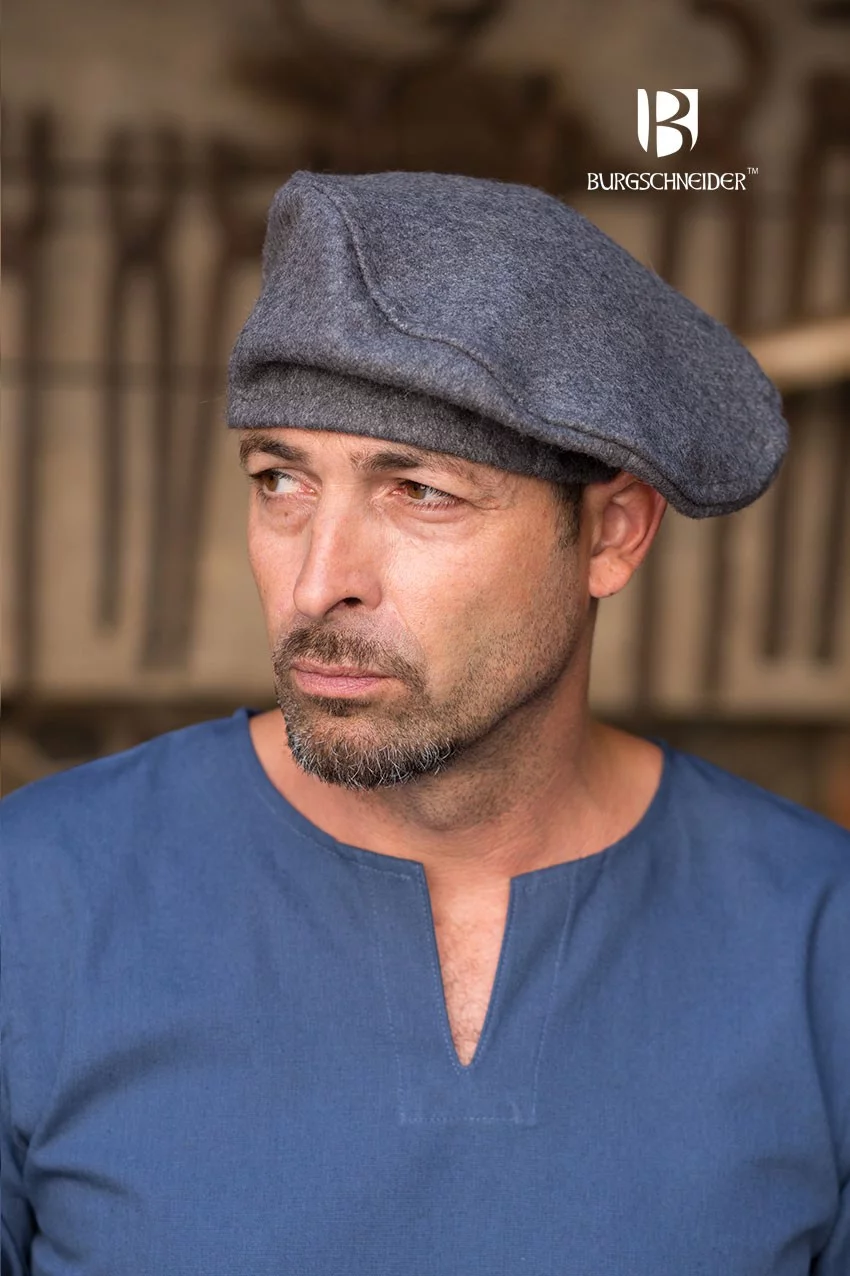What is a Parlota?
The parlota is a head accessory that had notable popularity in Spain during the 16th century. This headdress is distinguished by its wide, flat design, often made from materials such as woolen cloth, cotton, or velvet. The parlota was not just a fashion item; it was also a symbol of status and elegance in medieval and renaissance contexts.
Characteristics of the Parlota
Materials: Most parlotas were made from woolen cloth, which provided durability and warmth. However, there are also versions made from cotton or velvet, each offering a different texture and use to the accessory.
Design: The characteristic shape of the parlota, with its wide and flat structure, gives it a distinctive appearance that can vary slightly depending on the region and historical period. This design was not only attractive but also functional for protection against the weather.
Use: The parlota was a unisex headdress, worn by both men and women. It could be seen in various contexts, from everyday life to important social events, and was common in the attire of the upper classes, reflecting the fashion of the time.

Main materials used in the manufacture of the Parlota
Woolen cloth: This material was the most common in the making of the parlota. It was often chosen in dark colors, with black being a classic that symbolized elegance and distinction.
Linen: It was used as an inner lining, providing comfort to the headdress and helping to regulate temperature during use.
Additional materials: Although less frequent, cotton parlotas were sometimes chosen for the lining, especially in dark tones. Velvet, on the other hand, added a touch of luxury, making these parlotas less accessible and, therefore, more valued in society.
Decoration and ornamentation
Parlotas were not only differentiated by their materials, but they also featured various decorative elements that enhanced their appearance and reflected the social status of the wearer. Some of the most common adornments included:
- Brooches
- Beads
- Pearls
- Small crystals
- Cameos
These ornamentations served not only an aesthetic purpose but were also a symbol of the wealth and elegance of the wearer, turning each piece into a textile work of art.

The parlota is, therefore, a fascinating example of how fashion can cross paths with history and culture, allowing current generations to appreciate the richness of historical dress and its symbolism. This headdress not only reflects the ingenuity of the tailoring techniques of its time but also connects us with a period full of creativity and personal expression in clothing.
















